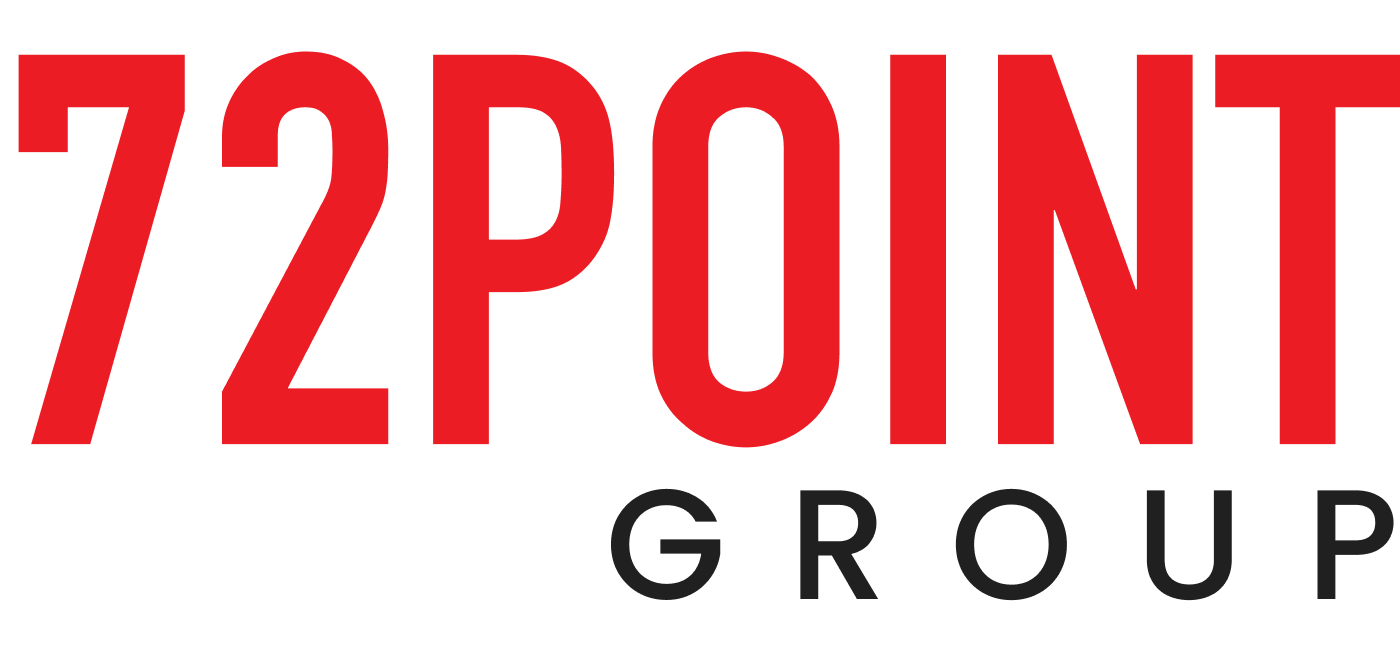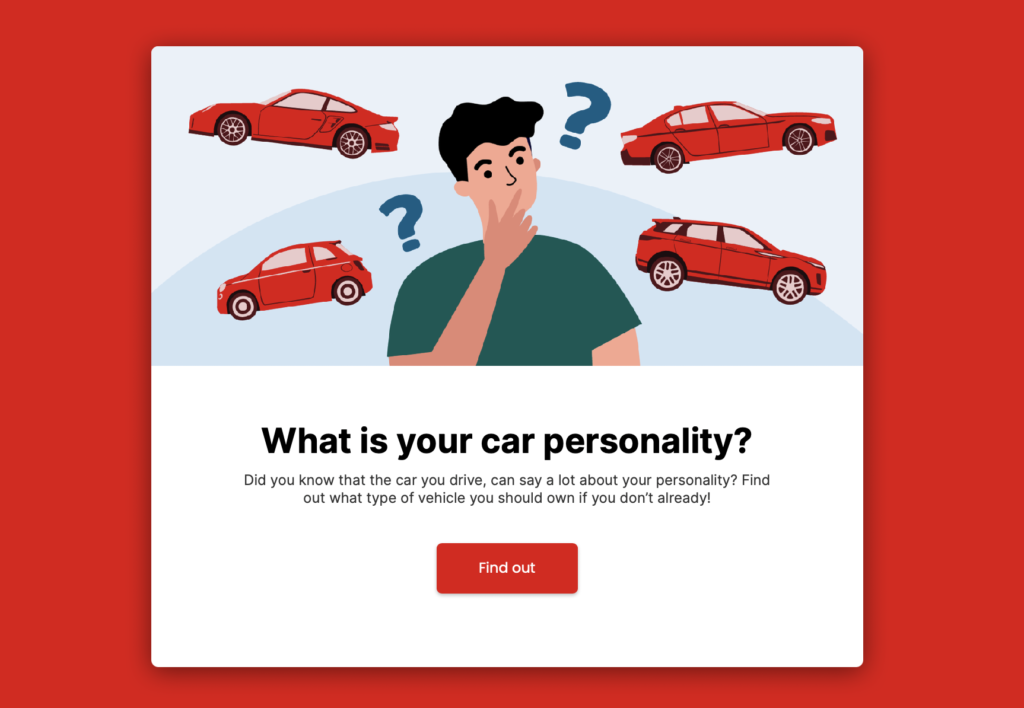Eschew All Those Beastly Adjectives
21 January 2015PR Insight,Featured,Digital,Our Family,Celebrity
 Sorting through a chest of old letters and photos recently, I came across a yellowing envelope marked ‘Roald Dahl’.
Sorting through a chest of old letters and photos recently, I came across a yellowing envelope marked ‘Roald Dahl’.
Memories flooded back as I opened it. This was a hand-typed reply I’d received from the great story-teller to a letter I wrote to him when I was 17, pleading for feedback and advice on an A level project I was doing about short stories. I’d included one of my own.
I remember how I felt when he replied – astounded, and then, with the callowness of youth (see pic!), a bit peeved that he’d been so terse:
Dear Jay,
You are asking too much of me. You must realise that I get an awful lot of these letters and you can’t expect me to write your thesis for you. It should be fairly obvious to you what the role of the short story is in modern literature. It’s a big one. Study particularly the American short story writers like O’Henry and Runyon and Hawthorne and Poe, and lots and lots of English ones.
If you want any dope on me there have been an awful lot of profiles in English magazines over the past year starting with the February 1979 issue of Vogue.
I have read your story. I don’t think it’s bad, but you must stop using too many adjectives. Study Hemingway, particularly his early work and learn how to write short sentences and how to eschew all those beastly adjectives. Surely it is better to say “She was a tall girl with a bosom” than “She was a tall girl with a shapely, prominent bosom”, or some such rubbish. The first one says it all.
Yours sincerely,
Roald Dahl
Heeding his 35-year-old advice, I tweeted a snap of the letter with the message: “In 1980, as a spotty teenager, I wrote to Roald Dahl asking for advice on writing. Here is his priceless response”. Yes, I know that contains two “beastly” adjectives, but I felt they were justified.
A week later, and with no additional ‘push’ from me, the post had been retweeted over 1,000 times and favourited by more than 1,500 people, making it my most popular tweet by a country mile.
 Obviously its popularity could be attributed to Dahl himself; his books are a part of so many of our lives. But for teachers and writers (and so many of the retweets have been by them) what resonates is the advice, specifically that passed on so memorably in the final three sentences. It sank into my teenage brain and led to a mantra when I worked as a reporter and then in PR: ‘keep it tight’, whether it be an intro or a pitch to a news editor.
Obviously its popularity could be attributed to Dahl himself; his books are a part of so many of our lives. But for teachers and writers (and so many of the retweets have been by them) what resonates is the advice, specifically that passed on so memorably in the final three sentences. It sank into my teenage brain and led to a mantra when I worked as a reporter and then in PR: ‘keep it tight’, whether it be an intro or a pitch to a news editor.
I remember a team of in-house PRs coming into the SWNS newsroom many years ago to see their story being pitched to national newspapers news editors one morning. The PR director and two wide-eyed interns (I think they were from a rail group) watched as I made the call to desk after desk with the same 10-second spiel: ”Oh yeah, and we’ve got a fun one – a list of the weirdest items left behind at train stations this year, including a wooden leg, a stuffed gerbil and a jar of pickled eggs. With pix.” After the call, the PRs were mortified. ”You didn’t even mention the name! Or how many stations were included in the round-up! Or how amazing some of the things were!”
Of course, that wasn’t the point. It was about the story, and you’ve got about 10 seconds to tell it to a busy news editor. These people deal every day with the absolute extremes of story-telling – terrible human tragedies, major sporting achievements, business disasters – so to oversell or ‘overtell’ our/your survey would show we had no understanding of the way it goes. The mention of the client in the pitch would have been a switch-off. And to have called the results of the survey “amazing” would just have been beastly.
Digital PR Campaigns. How Important Are They?
25 May 202272Point News,PR,Digital
At 72Point we are constantly experimenting to try and create digital PR campaigns that work for our clients and publishers.
Interestingly we're seeing great results from online quizzes, which are getting great digital pick up with the added benefit of real engagement from readers.
This represents a win for both parties. The client is getting thousands of completions on their quiz which is specifically designed to align with their messaging and the publishers are getting an uptick in terms of dwell time.
Our in-house design team, Oath Studio, create these assets to engage target audiences spanning and coupled with our experience of what stories drive the news agenda, these digital-first campaigns have been driving punchy results for our clients.
YourRedCar
Our recent project for The Romans and YourRedCar featured a fully branded quiz to discover what your car choice says about your personality.
As well as the vast news coverage secured, the quiz delivered 11,568 completions, providing great engagement with the brand and carrying their key message to their audience in a fun and memorable way.
Average completion time of the quiz was 2 minutes and 30 secs, showing that visitors had a solid dwell time too.
Fixter
Likewise, MOT and car service provider Fixter needed content to engage their audience. We put together a quiz to test for dashboard knowledge, promoting their key message of being a revolutionary car maintenance provider.
That quiz generated 11,300 plays to give Fixter a highly engaging asset to embed on their website and supplementing the widespread media coverage secured.
As part of SWNS Media Group, we have access to a social media audience of over 540,000 users, meaning that we can distribute content to a wide audience on those digital platforms, ultimately directing viewers to our clients' websites.
If you'd like to know more, drop us a line. Hello@72point.com
Dan Harding's Hidden Talent
Our Broadcast Editor Dan Harding talked with PRMoment about the book he's written called 'Gay Man Talking', all whilst jugging shoots and keeping clients happy:
"During the pandemic and juggling multiple video shoots (four to five a week) I wrote an important book for the LGBTQ+ community and its allies, Gay Man Talking - All the Conversations we Never Had .
The book is being published next month, and I'm proud (nervous) of it coming out. For anyone working a full-time job and then doing a hidden talent on the side, then putting a heartfelt product out there, I applaud you. It's been a journey and a lot of late nights. I think it's so important to celebrate peoples talents outside of their nine to five, encouraging people to pursue passions and excel in other areas.”
Click here to read the full piece on hidden talents in PR.
CSR specialist Lisa Malyon joins 72Point
Award-winning CSR specialist Lisa Malyon joins 72Point, supporting our vision of supporting more household name brands with campaigns that engage audiences and tackle today’s biggest issues.
72Point is a top 20 consumer agency that provides unique creative and unrivalled distribution for some of the biggest brands such as British Airways, Virgin Media, Sky and Lyst.
We also have a strong Corporate Social Responsibility record and provided over £140,000 of pro-bono PR support in 2018 to charities including Children with Cancer UK, British Lung Foundation, Social Enterprise UK and Young Epilepsy as part of our annual Charity of the Year initiative.

The addition of award-winning entrepreneur, active campaigner and PR agency owner Lisa Malyon to our team will bolster our talent for delivering PR campaigns that create positive change, for long-term brand benefit.
Managing Director Chris Pharo said: “Lisa’s talents ensure we deliver more engaging campaigns and viral stories that direct the nation’s conversations and support our clients’ CSR objectives.”
Malyon said: “My belief is that every business has the capacity and budget to deliver a CSR campaign that will impact others whilst impacting the bottom line, and I’m keen to challenge anyone who thinks differently.”

Once synonymous with PR surveys, 72Point has evolved the PR technique of News Generation into the art of engaging the media intelligently, harnessing the power of its unique creative and vast media network to deliver mass exposure for household name brands.
Last year, our media coverage views topped 504 million; our work on the consumer launch of Volkswagen’s partnership with Tesco and PodPoint to create the UK’s biggest free EV charging network secured 455 pieces of coverage in 27 countries.
CREATIVE HITS & MISSES - Dan Harding & PRWeek
27 March 2023Uncategorized @en-gb
Daniel Harding, broadcast editor at 72Point, analyses this week’s creative offerings for PRWeek, read the article here.
Creative Hits & Misses
Sam Brown, our very own Creative Director gives PRWeek her line up of creative hits and misses from over the past week, which saw the likes of Deliveroo and Ikea pioneering the eater weekend coverage.
Conversation is key to men's health
15 January 201872Point News,PR Insight
Every November, the Movember Foundation brings the issue of men’s health back into the national conversation with their well-known moustache-growing campaign. They raise awareness of the fact that men die an average of 6 years younger than women for reasons which are largely preventable, often based on a reluctance to seek help and speak out about health concerns. Stiff upper lips and pressure to ‘be a man’ means conversations about men’s health are often side-lined. This is why charities like Prostate Cancer UK and CALM team up with the Movember Foundation each year to raise awareness of the common health issues causing men to die too young. They aim to tackle social stigma that stops men talking openly to each other about their health. Conversation is key to the men’s health debate – so to kick off discussions this month, here are the issues that will be front and centre of Movember:
Prostate Cancer
A staggering 11,000 men die from prostate cancer in the UK every year, but the exact cause is still unknown. Reluctance amongst men to confront health concerns is preventing this issue from becoming common knowledge. Prostate Cancer UK, with high-profile ambassadors within the English Football League and TALKSport, are leading the charge in encouraging men to become well-informed, vigilant and proactive in preventing and tackling the disease. They’re currently raising awareness of prostate cancer among black men – 1 in 4 will be diagnosed with the disease in their lifetime, compared with 1 in 8 of other ethnicities.
Testicular Cancer
Testicular cancer, although relatively rarer, is the most common cancer in men between the ages of 15 and 35. Some men delay seeking help because they don’t feel any pain, or feel fit and healthy. Others have said they have waited to avoid appearing weak or “making a fuss out of nothing”. For many, pressure to ‘be a man’ and the British ‘stiff upper lip’ culture is preventing them from seeking help for potentially serious medical issues.
Suicide Prevention
Last year, 75% of UK suicides were men aged under 45 – a shocking statistic that shows many younger men are driven to the point where they no longer see value in life. Since 2003, the Campaign Against Living Miserably (CALM) has worked on helping men to open up. Slogans such as ‘being silent isn’t being strong’ aim to encourage men to speak out and seek the help they need. CALM is working hard to break down these barriers by providing a helpline for men who are in crisis, and by pushing for changes in policy and practice – so that male suicide can be prevented.
Mental Health
Mental health issues can affect anyone, and 12.5% of men in the UK are suffering from one or more. Many suffer in silence and refuse to seek medical attention for issues that are not considered ‘physical’. In a 2016 survey by Opinion Leader, the majority of men said they would take time off to get medical help for physical symptoms; yet less than 1 in 5 said they would seek medical help for anxiety or while feeling low. A severe mental health problem can have devastating wider consequences, such as homelessness, which mostly impacts men. Men’s mental health issues are all too often side-lined, and not taken as seriously as they should be. Speaking up and seeking help can save lives.
You can sport a moustache or grow a mullet this Movember – but starting a conversation is key. Stay tuned for more insights from 72Point and OnePoll this Men’s Health Awareness Month and email us at hello@72point.com for more information on how we support national awareness campaigns with high-quality media exposure.
Content Umbrella: The coming together of PR, marketing, social media and SEO
22 April 2016PR Insight,Featured,PR,Visual Content,Marketing,Digital
 SEO, PR, digital advertising, content marketing; they all seem to be doing the same thing nowadays.
SEO, PR, digital advertising, content marketing; they all seem to be doing the same thing nowadays.
As Google demands better quality content, online media consumers get turned off by display and brands look to engage rather than convert there has been an amalgamation of digital disciplines leveraged on the basic principles of creating and distributing content.
Which is why we’ve coined the term Content Umbrella.
The content umbrella represents a significant shift towards content across several industries. Our white paper, released this week, documents how the mobile and digital revolution has necessitated a mass re-think across the board and how the shift has implicated specific disciplines as well as the content industry as a whole.
To whet your appetite, here’s a wee snippet:
Display Blind: Advertising Adapts to Digital
Display advertising is at best a saturated market and at worst a marketing technique teetering on irrelevancy. As more people access content via mobile devices the marketing world has been faced with the dilemma of how to best communicate to audiences who are wise to the motive behind a display ad.
Consumers, on the one hand, do see value in content. Per-dollar content marketing produces roughly three times as many leads as display advertising according to Oracle research. Furthermore, the consumer becomes a brand champion by engaging with the content, creating a c2c ‘sharing’ relationship rather than a b2c ‘telling’ relationship. With more consumers accessing the internet via a smartphone over any other device, the tip towards content is only going to grow.
Social Media: Native Social vs Digital Display
Social media is also confronting how to communicate marketing messages to an increasingly mobile user base. On mobile’s smaller screens, the stream is the experience, which is why display has struggled to make an impression.
In-stream native ads, however, look, feel, and function seamlessly across mobile and PC, which is precisely what brands want. AdRoll analysis of Facebook’s ad exchange revealed that ads in the News Feed achieve 49-times higher click-through rates and a 54 per cent lower cost-per-click than traditional placements in the right-rail sidebar. As a result, spending on native social is set to rocket to $21 billion worldwide by 2018, and it is likely to continue to climb.
 Slapped By A Panda: Google Demands Quality Content
Slapped By A Panda: Google Demands Quality Content
Google’s Panda algorithm instigated a golden age for purveyors of quality content. After years of SEO ‘cheats’ – content farms, keyword advertising, link building et al – there has been a mass purge of low quality, spammy sites which have been replaced by sites that provide relevant content that is interactive and of good quality.
All organisations looking to rank well for key search terms need a strategy that is focussed on creating high quality, highly relevant content that is distributed well. With talk of Google switching backlinks to brand citations, the SEO industry will become increasingly cosy with content and publishers.
PR in the Media Mix
In marrying the brands needs with those of the publishers, PR is perhaps best placed to unify the umbrella of content. PR professionals understand how to create engaging content while at the same time making brand considerations such as marketing messages and SEO objectives.
As a genuinely multimedia business that has been supplying content to national newspapers for 40 years, SWNS / 72Point are well placed to meet the demands of the digital industries falling under the content umbrella. Not only do we know how to create great content, we can give it the reach it deserves by distributing it through established channels.
Consider yourself a detective? Take our latest quiz to find out...
20 July 2018PR Insight,72Point News
COULD YOU GET AWAY WITH MURDER?
Over 154 pieces of coverage and counting on our project with Fox TV’s NCIS New Orleans – to co-incide with the new season launch tonight – revealing a quarter of Brits believe they could commit the ‘perfect crime’, featuring a quiz created by our in-house design team, to discover whether you have skills of a detective or not.
Take the quiz here.
Christmas Ads are Coming to Town
27 November 2014PR Insight,Marketing,Visual Content,Christmas
 It’s the end of November which obviously means it’s been Christmas ad season for months now. That means that every 10 to 15 minutes we’ve had flaming Christmas puddings, girls and boys dressed to the nines and unrealistically wrapped presents thrust upon our eyes.
It’s the end of November which obviously means it’s been Christmas ad season for months now. That means that every 10 to 15 minutes we’ve had flaming Christmas puddings, girls and boys dressed to the nines and unrealistically wrapped presents thrust upon our eyes.
Every year the nation’s (and the world’s) biggest brands spend thousands if not millions on their Yuletide ads; all trying to be the one that either makes you smile, makes you cry or makes your mouth water with delicious looking food. Every year they succeed and this year is no different.
In fact this year the ads seem bigger and better than ever. I find it hard to go on Facebook or Twitter without someone talking about or making me watch the latest Christmas advert. Pleasingly, this year, there seems to be a nice balance of ads which make you jolly and ads which make you borderline depressed.
Aldi for example, have pushed the boat out this year recruiting king of the Hootenanny, Jools Holland to tinkle the old ivories whilst being blasted with a dozen trumpets….none of which is a euphemism by the way. Then there’s the Debenhams ad showing what to many is the true joy of Christmas, happy smiling kids, running around and laughing. To me the idea of kids running around laughing is enough to make me never leave the house again but even I must admit that the Debenhams ad warms the cockles of my prematurely bitter old heart.
Marks and Spencer have gone down the jolly route with a magical themed ad which sees a couple of fairies making Christmas as special as it can be, whether it’s playing in the snow or having your washing magically upgraded (and consequently left outside on the line, in the cold, wet snow to spoil).
Boots on the other hand have taken a swerve from their normally jolly party mood type ad to focus more on a homage to the nursing industry. Their ad has gone down more the ‘I’m gonna make you cry until you buy one of our products’ route of advertising which seems to be increasingly popular at Christmas.
Obviously the John Lewis ad is a prime example. The John Lewis Christmas ad has become more than just an advert, it’s become an event. For many people it is one of the first genuine signs that Christmas is upon us whereas previously that accolade used to belong to Coca Cola with their iconic ‘Holidays are coming’ advert. John Lewis have made themselves the go to ad with the right balance of class, cuteness and emotion.
The John Lewis Christmas ad has become more than just an advert, it’s become an event.
This years offering is no different. Monty the Penguin has already become a household name and supplies of his plush counterpart are flying off the shelves. However the crown of most touching advert has been well and truly swiped from underneath John Lewis’ nose and plonked on the head of one Mr J Sainsbury.
The supermarket’s festive offering ties in with the 100 year anniversary of the start of the First World War, featuring the message that Christmas is a time for sharing, no matter what the situation. Although beautifully shot and profoundly heart-warming, the ad has unsurprisingly received its fair share of criticism with some remarking that it is cynical and disrespectful.
Christmas advertising, mainly due to an increasing dominance of commercialism has become a key part of Christmas, like it or not. During Christmases of old, people used to gather round a board game, or sit together to watch the Sound of Music for the millionth time. Now the family get together to see what festive spectacle John Lewis have put together. That is incredibly important in marketing terms. That means there is more pressure on marketers and advertisers to do something bigger than the ‘Buy this! Shop here!’ style adverts of old.
This explains why we see so many heartfelt, narrative adverts on our screens. For the big name brands and companies Christmas isn’t just about selling a single product, it’s about selling your whole company, getting people to choose you over your competitors. Therefore Christmas advertising has become more about portraying a message or a personality; about portraying the values of which your company stands for and with which Joe Public can identify. The Sainsbury’s advert is a great example of this.
Yes it might be a little bad taste given that they overall aim is to boost profits for Sainsbury’s but the advert is also in partnership with the Royal British Legion. What better way to use the power of Christmas advertising than to promote the work of such a noble charity. The ad shows that Sainsbury’s value the fallen (not that everyone else doesn’t) and that the notion of sharing at Christmas is key to the company’s image. Likewise the John Lewis advert reaffirms the messages of love and companionship; Boots celebrate the work of the nurses who work all hours; the Marks and Spencer’s ad even suggests that we turn our TV’s off and go and play outside like people did ‘when they were ‘ nipper’.
Nobody is suggesting that these are documentaries. Everyone knows they’re adverts and they’re doing it for profit. Yes the cynics will say that it’s a negative reflection of 21st century society where we focus on materialism and commercialism. But quite frankly so what? Do we all have to be quite so grumpy about it? I think it’s nice to see brands win us round with positive messages. It’s nice to grow attached to a certain advert, look at the fondness we all have for the late Linda Bellingham and her OXO adverts.
For the big name brands and companies Christmas isn’t just about selling a single product, it’s about selling your whole company
So when planning this year’s December marketing schedule we all need to remember this. People like things they can take into their hearts and minds, whether it’s funny or heart-warming. We need to think about our audience and not just about our profits. Your audience are people. People with shared experiences. This style of advertising is all about giving people just that and it’s these experiences that connect people with each other and in the world of marketing, connect people with brands.
To see what all the fuss is about some of the best (and worst) examples of Christmas marketing are on our Christmas Pinterest board .






